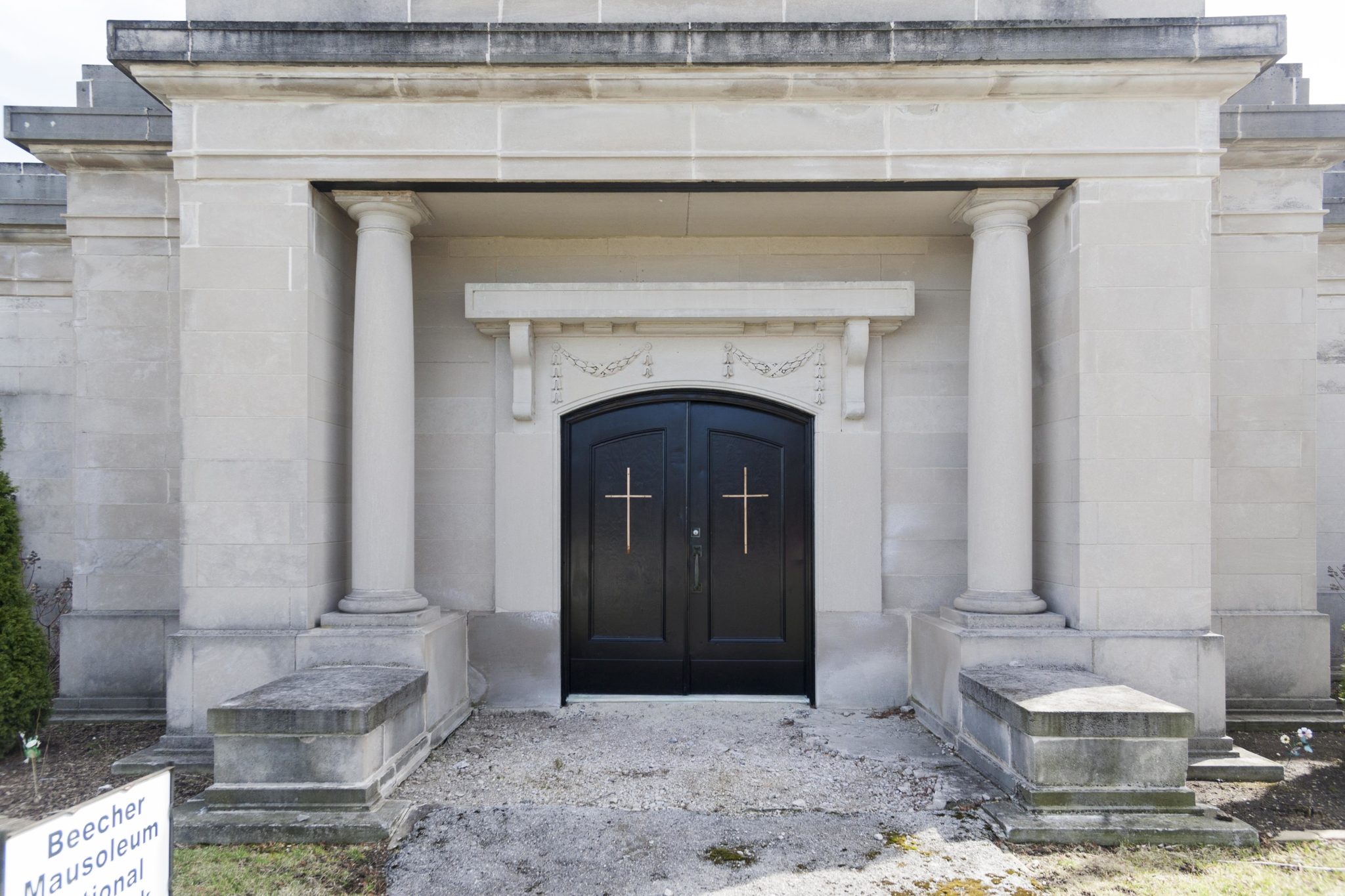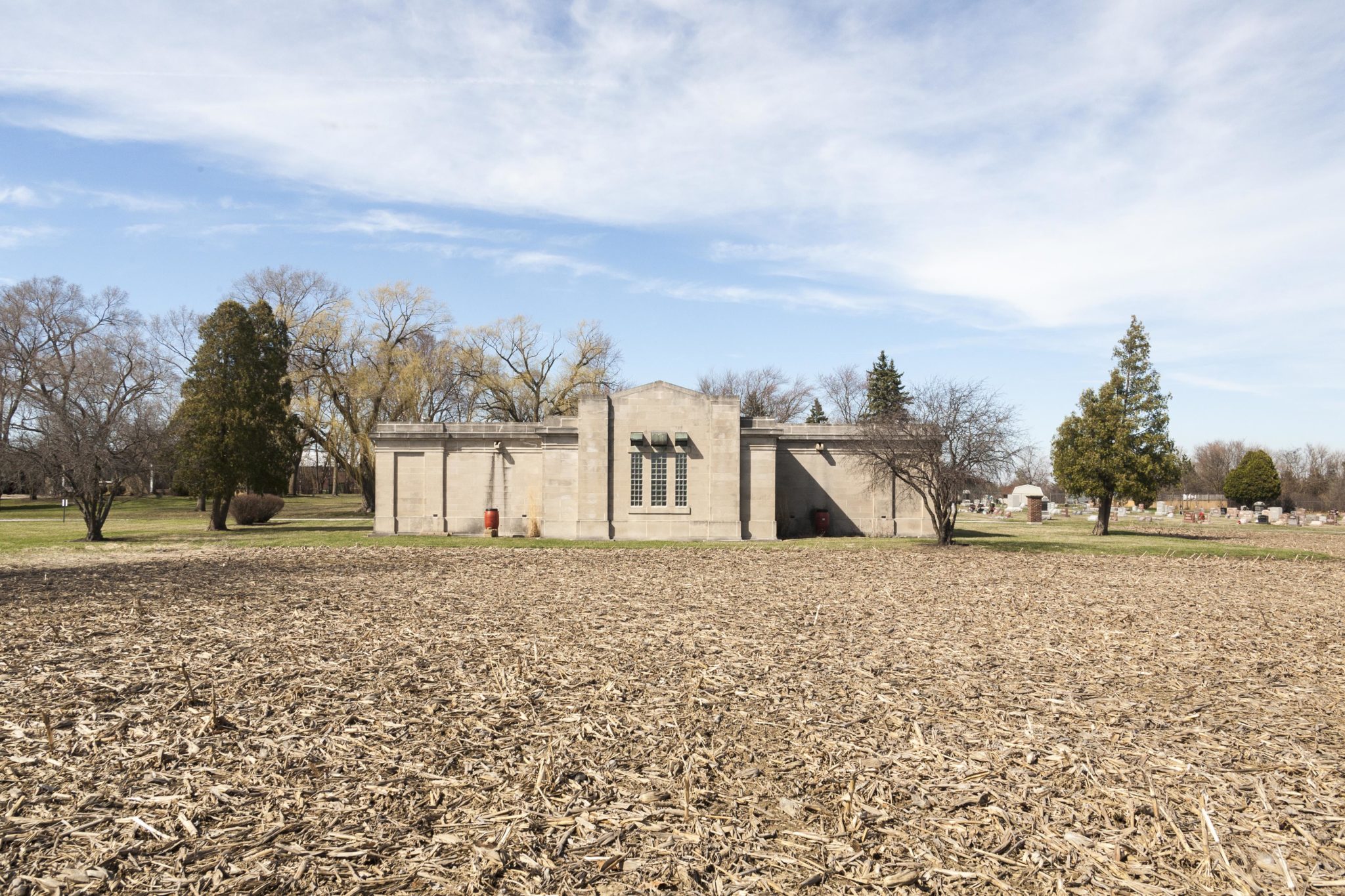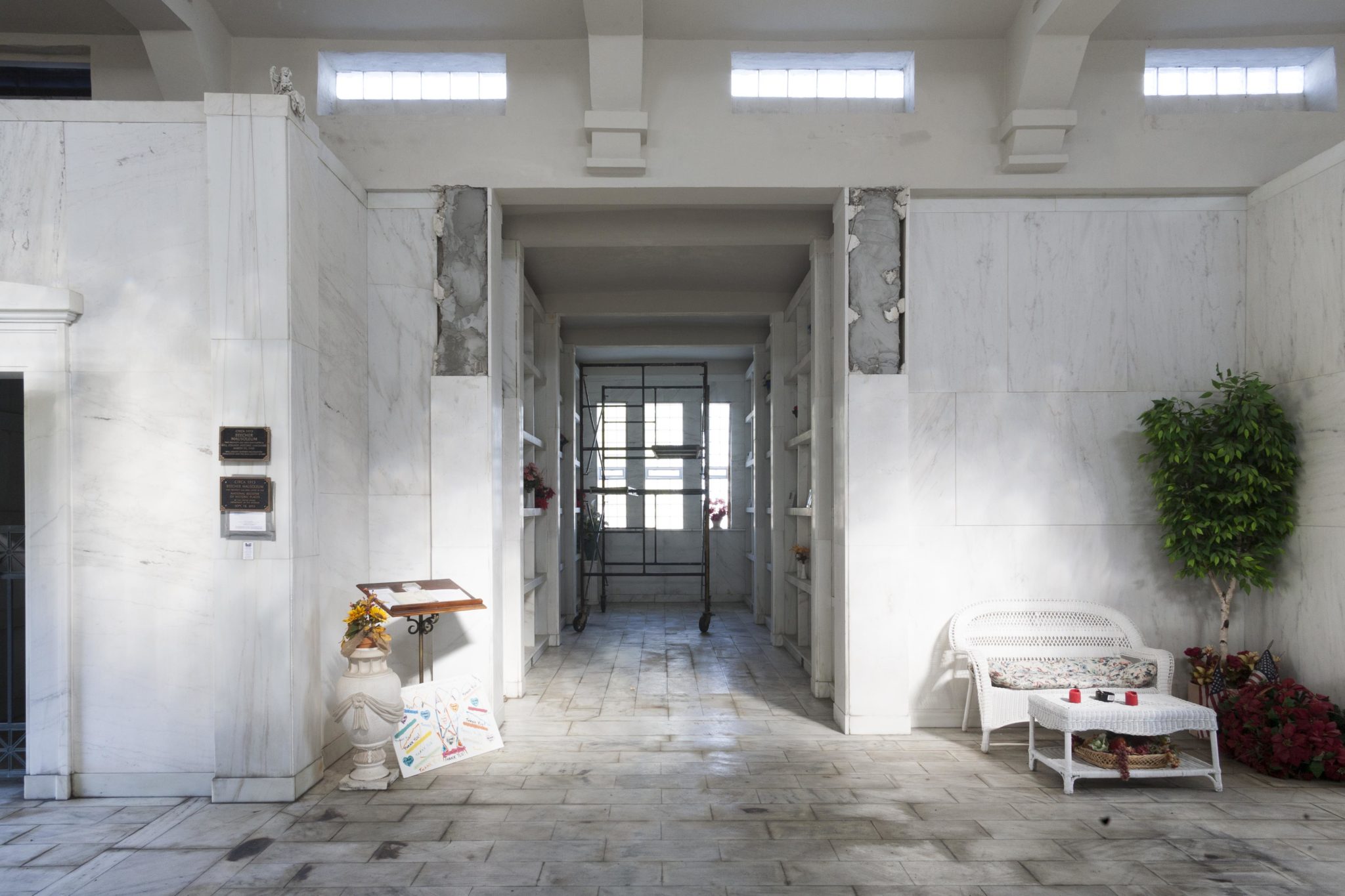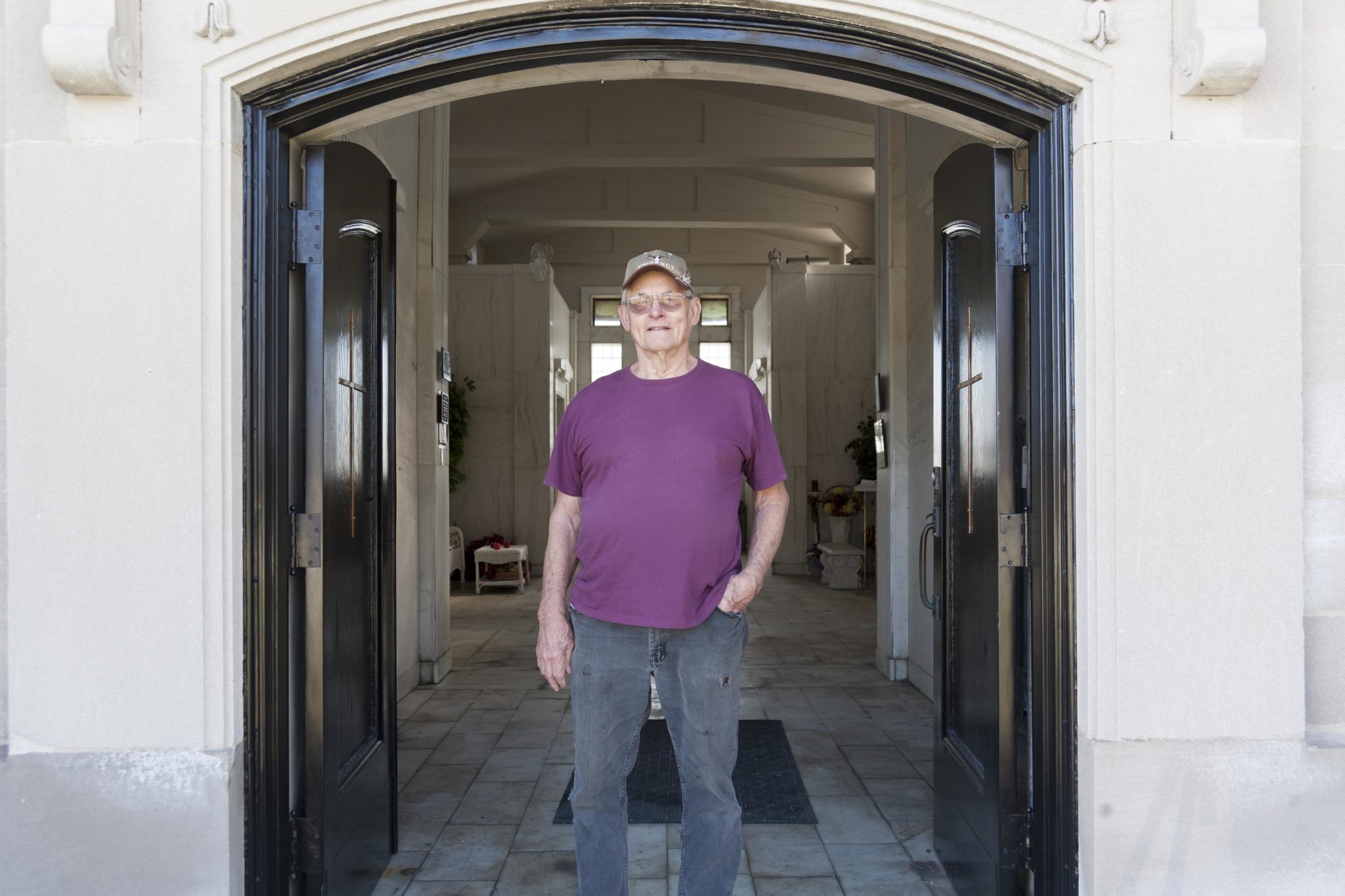Historic Significance
The Beecher Mausoleum, constructed in 1913, was one of these sites. Designed by Cecil E. Bryan, the Beecher Mausoleum features reinforced concrete with Bedford limestone veneer and contains 210 crypts, 173 of which are occupied. In the mid-20th century, vandals destroyed the original windows and the repairs depleted much of the endowment. Unlike most community mausoleums, the Beecher Mausoleum is located outside an adjacent church cemetery and outside the Beecher Village limits. In 2013, the Mausoleum was being maintained almost exclusively by private citizen Sandra Lee Thielman, a descendent of several family members interred there.
“The Beecher Mausoleum has come to mean so much more to me, than simply as the burial place for my ancestors,” Thielman recounted. “On that first trip some eighteen years ago, I had envisioned my earlier memories as a child, when my family went to pay our respects to those that had passed on. I remembered the mausoleum as a big, white, glorious building that made me feel respect and reverence. But when I saw it again, in what was then the present, it didn’t match my memory…The building had been abandoned and vandalized; some of its white marble was simply destroyed while some was discolored by fire and graffiti. Bullet holes in the glass block windows and the limestone exterior. Some of the graves were desecrated. Though mortified, I was inspired and decided to do whatever it took to bring it back to its former glory.”
(Photo credit: Liz Chilsen)




